Here is the Shree Jagannath Odia Calendar 2025 & 2024 you can get the finer version of Kohinoor Calendar with us having a great experience. The Odia calendar, also known as the Odia Panjika, is a solar calendar used in the Indian state of Odisha. It is based on the Saka era and is similar to the Indian national calendar, but with a few variations.
The year in the Odia calendar starts on the first day of the month of Baisakh, which usually falls in April. The Odia calendar has 12 months, with names similar to those used in the Indian national calendar. The months are Baisakh, Jyestha, Asadha, Srabana, Bhadrab, Ashwina, Kartika, Magrahayana, Pausa, Magha, Phalguna, and Chaitra. Each month has 31 or 30 days, except for the month of Chaitra, which has only 30 days in a common year and 31 days in a leap year.
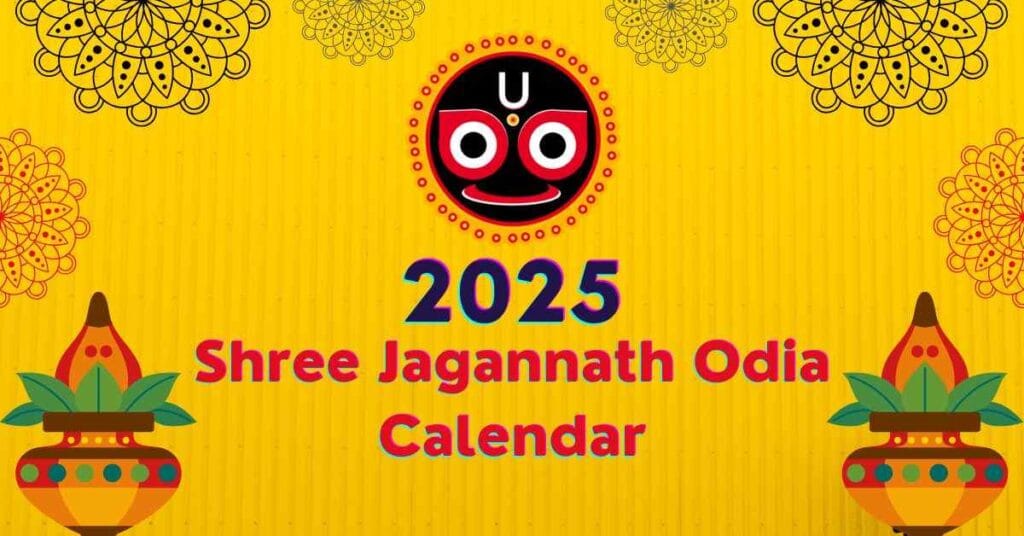
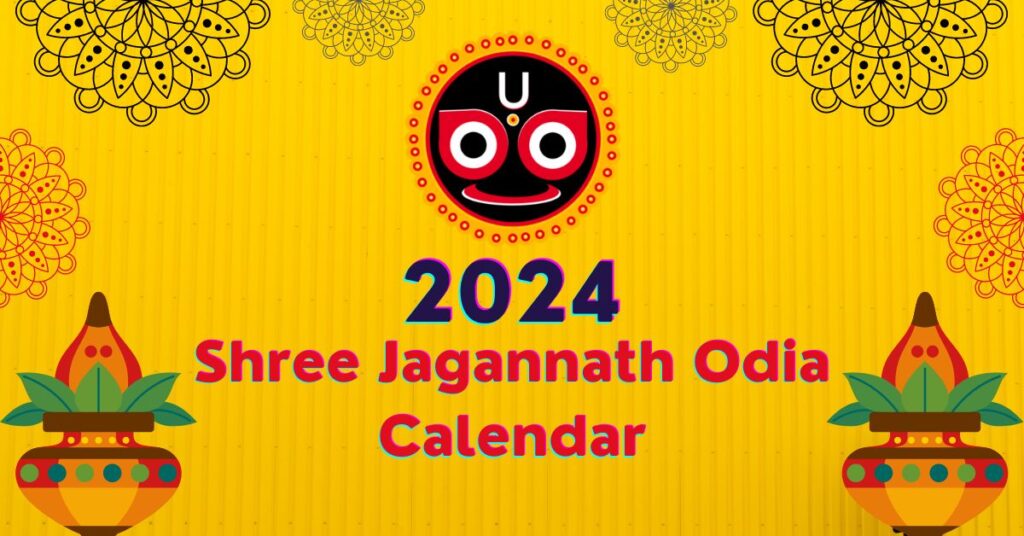
Table of Contents
Shree Jagannath Odia Calendar:
- All Jagannath Odia Calendar List [Click Here]
- Shree Jagannath Odia Calendar 2025 [Click Here]
- Shree Jagannath Odia Calendar 2024 [Click Here]
- Shree Jagannath Odia Calendar 2023 [Click Here]
- Shree Jagannath Odia Calendar 2022 [Click Here]
The people of Odisha use Odia Panji in their daily work and Planning. The new Odia Panji, Odia Kohinoor Calendar and the list of the festivals are here. Check Shree Jagannath Odia Calendar (Oriya) online for free. You can get all information about the festival, Vrata, Upabasa and Important Marriage dates from here. . The first day of the Shree Jagannath Odia Calendar begins from Pana Sankranti. The Pana Sankranti falls in the month of Baisakha. The financial new year of Odia Panji is known as Suniya.
The Odia calendar also includes important festivals and events, such as the Raja festival, which marks the beginning of the agricultural year, and the Dola Yatra, which is celebrated during the month of Phalguna.
It also has a different way of calculation for leap year called ‘Adhikamasa’ which is not followed in other calendars.
It is still in use among the people of Odisha for daily use and also in Govt. offices for official uses.
Suniya
According to the culture of Odisha and social life, the king of Puri Gajapati has great importance. The financial new year of Odisha begins in the name of Gajapati on the Dwadashi (12th day) of Bhadraba month. From this day new “Gajapati Anka” also started. This day is called Suniya in Odisha.
The new chapter of Gajapati also starts from Suniya. So Suniya is called Utkal New Year. On the day of Sunya, a special celebration is held in the Palace of King Gajapati. As per custom, Maharaja Gajapati visits the four idols in Shree Jagannath Temple and offers “Kanak Veti“. On Suniya day, the new number of Gajapati is drawn on a gold coin. From that day new Gajapati Anka (Gajapati number) starts counting.
Most of the festivals provided on the Shree Jagannath Odia calendar are calculated based on the positions of the moon and sun. While we give the details of the festivals each month, starting from January to December. But most Hindu festivals depend on the timezone for different cities as the sunrise time is different for different cities. For that reason, you should check for details of the celebration of festival time in different cities. This Calendar is extracted from Kohinoor Calendar.
Odia Panji:
The history and traditions of Shree Jagannath and Jagannath Temple are recorded in Madala Panji. This tradition was started by King Anantavarman Chodaganga of the Ganga dynasty in the 12th century. Every year on Vijayadashami day, this Panji is revised and updated. Odisha’s famous astrologer Pathani Samantha was the originator of the modern Odisha calendar. The famous Panjis of Odisha:
- Khadiratna Panjika
- Samanta Panjika
- Biraja Panjika
The people of Odisha also use other famous Odia Panji, i.e Radharaman Panji(Puri tradition Panjis), Bhagyadeepa Panji, Bhagyajyoti Panji, and Bhagyachakra Panji.
Important terms used in Odia Calendar:
Twelve months of the Shree Jagannath Odia Calendar and their presentation on the Georgian Calendar are shown in the above table. Mainly the Odia months fall in the middle of every Georgian calendar month. i.e if some days of Odia month Baisakha falls in April, some days are in May month. For this reason, you always found that all Odia Calendar was written in a format like Magha (January – February).
The months are respectively: Baisakha (April – May), Jyastha (May – June), Asadha (June – July), Srabana (July – August), Bhadraba (August – September), Ashwina (September – October), Kartika (October – November), Margasira (November – December), Pousa (December – January), Magha (January – February), Phalguna (February – March), Chaitra (March – April).
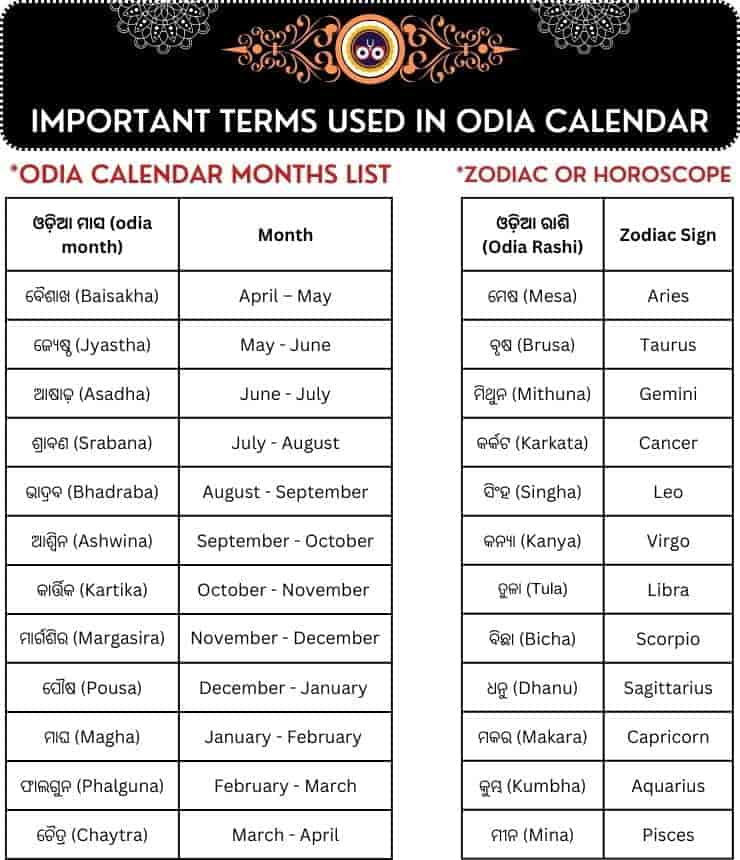
The Zodiacs or Horoscope sines used in Odia Panji or Shree Jagannath Odia Calendar and their Georgian terms are respectively: Mesa (Aries), Brusa (Taurus), Mithuna (Gemini), Karkata (Cancer), Singha (Leo), Kanya (Virgo), Tula (Libra), Bicha (Scorpio), Dhanu (Sagittarius), Makara (Capricorn), Kumbha (Aquarius), Mina (Pisces).
How to Read the Odia Calendar?
Most of the festivals are calculated based on the positions of the Moon and the Sun and the stars. All the terms used in the Shree Jagannath Odia calendar are kept in the following image.
Shree Jagannath Odia Calendar months are calculated based on the lunar cycle. Every 14 days the moon transit is considered to be 1 side From Purnima to Amavasya is Krishna Pakhya, while the period from Amavasya to Purnima is called Shukla Pakhya.
In Odia Calendar the dates, days and months are known as Tithi, Bara and Masa respectively. In some cases, the word Tithi (date) is also named Tarika. The term day and night are named Dibasa and Ratra.
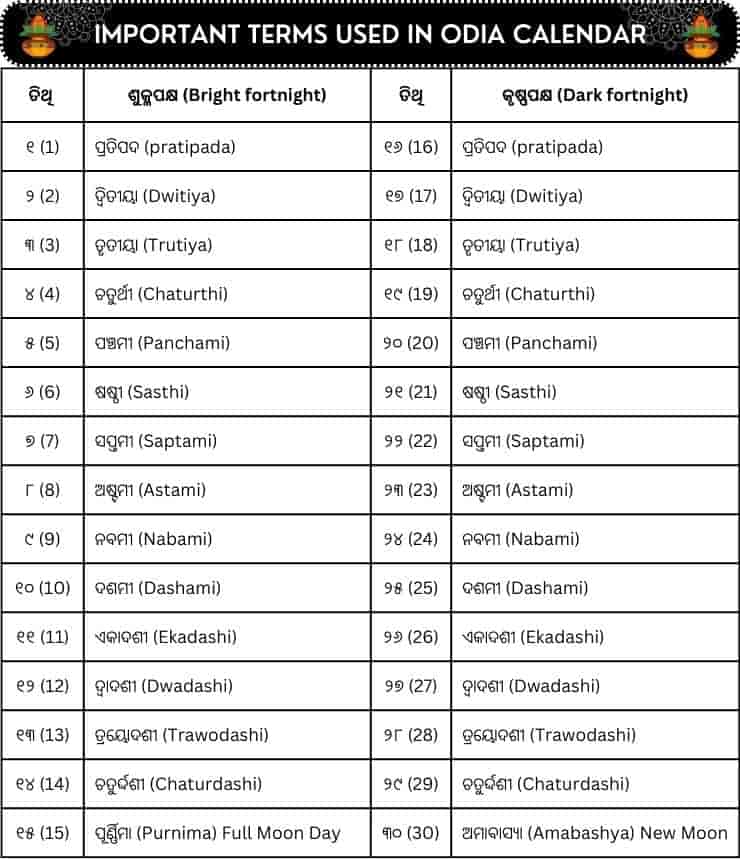
Krushnapakhya (Dark fortnight):
The 14 days after the New moon day is known as Krushnapakhya (Dark fortnight) in the odia calendar. Again the dates start from Pratipada, Dwitiya, Tritiya, Chaturthi, Panchami, Sasthi, Saptami, Astami, Nabami, Dasami, Ekadashi, Dwadashi, Trawodashi, Chaturdashi and finally ends on Amabasya (new moon day).
Suklapakhya (Bright fortnight):
After the full moon day or Purnima, another Pakhya starts as Suklapakhya (Bright fortnight) in the odia calendar. The dates start from Pratipada, Dwitiya, Tritiya, Chaturthi, Panchami, Sasthi, Saptami, Astami, Nabami, Dasami, Ekadashi, Dwadashi, Trawodashi, Chaturdashi and finally the Purnima (full moon day). Then the Suklapakhya changed to Krushnapakhya.
How to Read Odia Kohinoor Calendar?
Odia Kohinoor Calendar is prepared from Khadiranta Panjika. The People of Odisha celebrates their all festivals and occasion by following the Kohinoor Calendar. Sunrise and sunset times are different in different cities. That is why you should pay attention to the sunrise and sunset times given in the following calendar. You can follow the hints to read Odia Kohinoor Calendar perfectly.
1. The title of Kohinoor Press Sankhepa Panjika is written here. Kohinoor Panjika is used above 88 years for calculating astrological calculations for Lord Jagannath and Shree Jagannath Temple. The address of Jail road, Daragha Bazar, Cuttack, Pin: 753001, Phone: 0671 – 2203684.
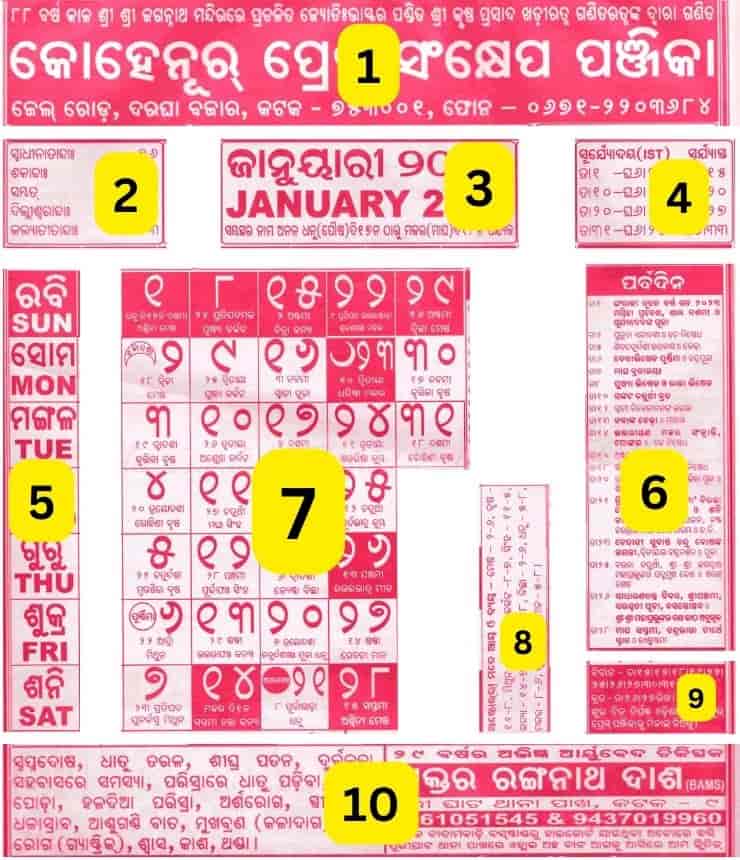
2. In this section the recent year is calculated from a specific timeline like Swadhinatardhha, Sakadhha, Sambhat, Diliswaradhha, and Kalyatitardha.
3. This section shows the current month of the Calendar like January, February, March, April, May, June, July, August, September, October, November, and December. Followed by the Odia Months Thithi (date) start and end date.
4. This section contains the Indian Standard Time (IST) of sunrise and sunset times. It presented specific times when the sun rises and sets every month 1, 10, 20 and 30.
5. In this vertical list all odia days are written in short form like Sunday (Sun), Monday (Mon), Tuesday (Tue), Wednesday (Wed), Thursday (Thu), Friday (Fri) and Saturday (Sat).
6. This is the festivals and event list for the given month.
7. All the dates of the corresponding month are written in chronological order. All the Odia terms used in the calendar are written below the odia dates.
8. Specific astrological calculation like Aya and Byaya (Income and expense) is displayed here. This section’s position may vary, you have to notice this section.
9. Important marriage dates, vrata dates and lucky dates of this month are shown here.
10. ads.
Month-wise important festivals in Shree Jagannath Odia Calendar
Many festivals are observed in Odisha as per the Shree Jagannath Odia Calendar. The people of Odisha celebrate many of the above festivals with great joy. Among them, are Shree Jagannath’s thirteen festivals in twelve months such as Akshaya Tritiya, Snnana Purnima, Ratha Yatra, Sayana Yatra, Dakshinayan Yatra, Paswaparibarttana Yatra, Debotthana Yatra, Prabarana Yatra, Pushyabhisek Yatra, Dola Yatra, Menaka Yatra and Niladri Mahodaya. Apart from that, many festivals are also celebrated in Odisha, they are Ganesh Puja, Saraswati Puja, Holi, Diwali, Durga Puja, Kali Puja, Sitalasasthi, Saptami Buda and Handi Bhanga Yatra. Here is the monthly wise festival list is given below. Read more about Odia Calendar from Wikipedia.
Baisakha (April – May)
The famous festivals of the month Baisakha are Maha Bisuba Pana Sankranti, Hanuman Jayanti, Rukmini Amabasya, Eid al-Fitr, Akshaya Tritiya, Sita Nabami, Sramika Dibas, Nrusingha Janma, Chandan Purnima and Buddha Jayanti.
Jyastha (May – June)
The famous festivals of the month Jyastha are Srikhetra Bhaunri, Utkal Bhaunri, Brusa Sankranti, Sabitri Brata, Jyasta Amabasya, Rambha Tritiya, Rama Chaturthi, Siba Bibaha, Sitala Sasti, Aranyaka Sasti, Ganga Dasahara, Nirjala Akadasi Upabasa, Rukmini Bibaha, Champaka Dwasi, Debasnana Purnima, Pahili Raja, Raja Sankranti (Mithuna Raja Sankranti), Bhudaha and Sesa Raja.
Asadha (June – July)
The famous festivals of the month Asadha are Netrostav, Sri Gundicha, Ratha Yatra, Hera Panchami, Parsurama Astami, Bipada Tarini Brata, Nabami Sandhya Darsana, Bahuda Yatra, Eid Juha, Shree Jagannath Sunabesa, Harisayana Akadasi, Shree Jagannath Niladri Bije, Byasa Purnima and Guru Purnima.
Srabana (July – August)
The famous festivals of the month Srabana are Manasa Panchami, Bolbam Arambha, Kamada Akadasi, Dakshinayana, Karkata Sankranti, Chitalagi Amabasya, Maharam, Harisayana Akadasi, Shree Jagannath Bedha Parikrama and Srabana Purnima.
Bhadraba (August – September)
The famous festivals of the month Bhadraba are Purusotama Akadasi, Swadhinata Dibas (independence day), Sinha Sankranti, Jagrata Gouri Panchami, Jhulana Arambha, Gamha Parba, Baladebanka Janma, Rakhya Bandhana, Rakhibandhana, Gamha Purnima, Khudurukuni Osa, Rekha, Rakhya Panchami, Guru Divas, Sarbapali Radhakrisnnan Jayanti, Sri Krishna Janmashtami, Budhibamana Osa, Nandoustav, Kanya Sankranti, Biswakarma Puja, Ganesh Puja (Ganesh Chaturdasi), Nuakhai, Rusi Panchami, Sasti Osa, Lalita Saptami, Radhastami, Tala Nabami, Anukula Chandranka Jayanti, Sunia, Bamana Janma, Mohammad Jayanti, Indrostava Purnima.
Ashwina (September – October)
The famous festivals of the month Kartika are Gandhi Jayanti, Sastri Jayanti, Debothapana, Mulastami, Mahalaya Amabasya, Biraja Debinka Ratha Yatra, Tula Sankranti, Garvana Sankranti, Tapta Sasti, Pithe Mahastami, Durga Brata, Maha Nabami, Dasahara, Bijayadasami, Bhasani Jatra, Kumara Purnima and Gajalaxmi Puja.
Kartika (October – November)
The famous festivals of the month Jyastha are Kartika Bratarambha, Uma Akadasi, Syamakali Puja, Dipabali (Diwali), Gobardhan Puja, Sisu Dibas, Neheru Jayanti, Bicha Sankranti, KartikeyaPuja, Naga Chaturthi, Anla Nabami, Sri Radha Pada Darsana, Garuda Dwadasi, Tulasi Bibaha, Bada Osa, Rasa Purnima, Bali Jatra and Kartikeswara Puja.
Margasira (November – December)
The famous festivals of the month Margasira are Chadakhai, Margasira Gurubar, Sita Bibaha, Srikhetra Parikrama, Prathamastami, Kanjianla Nabami, Manabasa Gurubar Osa, Mahodadhi Amabasya, Rambha Tritiya, Dhanu Sankranti, Pahili Bhoga, Kurala Panchami, Odhana Sasthi, Prabarana Sasthi, Byanjan Dwadashi, Ananga Trayodasi, Gita Jayanti, Jisu Khrista Janma (Bada Dina), Pasana Chaturdasi and Pandu Osa.
Pousa (December – January)
The famous festivals of the month Pousa are Danda Pahanra, Bata Osa, Sambha Dashami and Surya Puja, Debabhiseka Purnima and Chandra Puja, Magha Brata Arambha, Pushya Bhiseka, Nabanka Bedha and Masanta, Makar Sankranti, Pongal, Tribeni Amabasya and Maa Biraja Devinka Janma Ustava.
Magha (January – February)
The famous festivals of the month Magha are Saraswati Puja, Shree Panchami, Basanta Ustava, Mahaprabhu Jagannath Ankara Ratha Katha Anukula (Ratha wood inauguration of Lord Jagannath), Magha Saptami, Chandrabhaga Tirtha Snnana, Nityananda Mahaprabhunka Janma Ustava, Magha Purnima, Magha Brata Samapana, Shree Jagannathnkara.
Phalguna (February – March)
The famous festivals of the month of Phalguna are Gajaudarana Besa, Agni Ustav, Joranda Mela, Kumbha Sankranti, Maha Shiva Ratri, Jagara, Phagu Dasami, Baraha Dola, Olakana Melana, Dola Purnima, Shree Chaitanyadebanka Janma, Holi Ustav, Panchu Dola, Mina Sankranti and Barani Snnana.
Chaitra (March – April)
The famous festivals of the month Chaitra are Ashokastami, Shree Lingaraj Ratha Yatra, Shree Rama Nabami, Basantika Dasahara, Utkal Divas, and Chaitra Purnima.